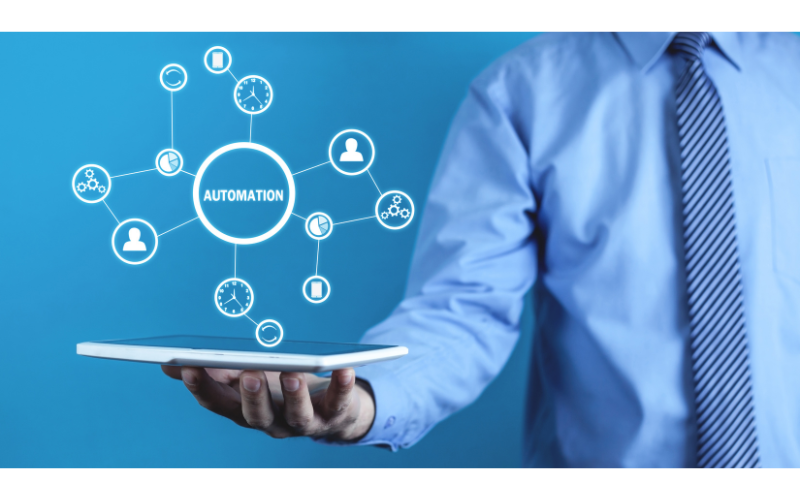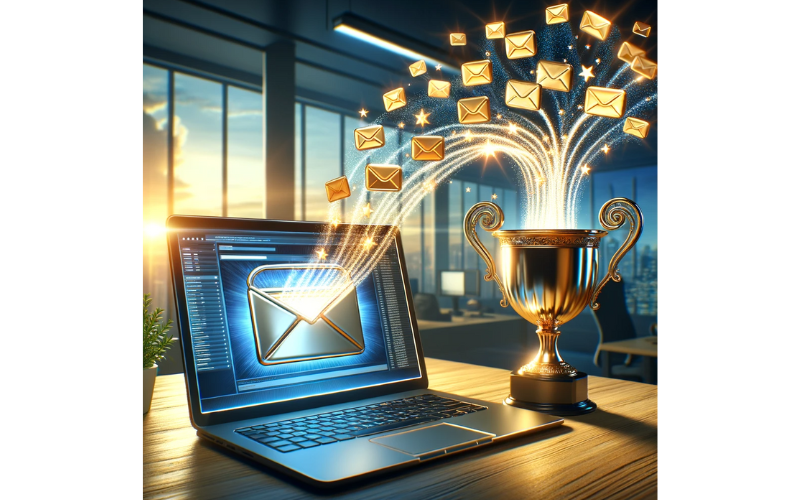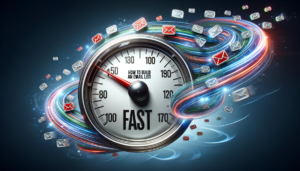Introduction to Email Marketing Automation
Email Marketing Automation (EMA) has become an indispensable tool in the digital marketing toolkit. By automating email campaigns, businesses can engage with their audiences in a more personalized and timely manner, leading to enhanced relationships and improved conversions.
This comprehensive guide delves into the depths of Email Marketing Automation, covering its history, core components, popular platforms, setup guide, successful strategies, and much more.
Through insightful case studies, we’ll explore the transformative potential of EMA, and look ahead to the promising future it holds.
Whether you’re a seasoned marketer or a business owner venturing into the realm of automated email marketing, this guide provides a well-rounded overview, actionable steps, and a glimpse into what the future holds for Email Marketing Automation.
Table of Contents
History and Evolution of Email Marketing Automation

The concept of email marketing traces its roots back to the late 1970s, with the inception of email itself. However, the journey from basic email marketing to the sophisticated Email Marketing Automation (EMA) we witness today is filled with technological advancements and a better understanding of consumer behavior.
In the early days, email marketing was about sending generic messages to a broad audience. The approach was quite rudimentary and lacked personalization. However, as the digital world evolved, so did email marketing. The first step towards automation was the ability to schedule emails, which saved marketers time but still lacked the personalized touch that is crucial for engagement.
The real evolution began with the integration of segmentation and analytics, which are now considered pivotal LSI keywords in Email Marketing Automation. Segmentation allows marketers to divide their audience into distinct groups based on various criteria like demographics, behavior, and preferences. This was the initial step towards personalization, allowing for more targeted and relevant communication.
As technology progressed, Artificial Intelligence (AI) and Machine Learning (ML) started playing a significant role in EMA. These technologies, part of the broader realm of Natural Language Processing (NLP), enabled sophisticated analysis of consumer behavior and preferences. Now, email marketing wasn’t just about sending messages; it was about sending the right message to the right person at the right time. The introduction of NLP also facilitated better email sorting, routing, and sentiment analysis, making email campaigns more effective and engaging.
The current state of Email Marketing Automation is a blend of advanced segmentation, A/B testing, and predictive analytics. It’s about understanding the subscribers, planning engaging content, and continuously optimizing the campaigns for better performance. The journey from simple email blasts to sophisticated, automated campaigns shows how technology and a better understanding of consumer behavior have shaped Email Marketing Automation into a powerful tool for nurturing leads and driving conversions.
The future is even more promising with ongoing advancements in AI, ML, and NLP, set to further revolutionize Email Marketing Automation. The integration of these technologies will enhance personalization, automate mundane tasks, and provide richer insights into consumer behavior, taking Email Marketing Automation to new heights.
Core Components of Email Marketing Automation

Email Marketing Automation (EMA) has emerged as a cornerstone for successful digital marketing strategies, streamlining the process of engaging customers in a personalized and timely manner. At its core, EMA encapsulates several critical components that work in unison to drive marketing objectives. For those new to email marketing, gaining a foundational understanding can be immensely beneficial. Our Email Marketing for Beginners guide is a great resource to start with.
Here are the core components of Email Marketing Automation:
- Automated Email Campaigns: The essence of Email Marketing Automation lies in the automation of email campaigns. Automated campaigns are pre-designed email sequences triggered by specific actions or conditions, such as a new subscription, a purchase, or a click-through from a previous email. These campaigns ensure that relevant communication reaches the right individuals at the right time without manual intervention.
- Segmentation and Targeting: Segmentation is a pivotal component that enhances the effectiveness of email marketing by categorizing the audience into distinct segments based on demographics, behaviors, or preferences. Targeting, on the other hand, entails crafting personalized messages for each segment to enhance engagement and conversion rates.
- Analytics and Reporting: Understanding the performance of email campaigns is crucial for continual optimization. Analytics and reporting tools within EMA platforms provide insights into open rates, click-through rates, conversion rates, and other vital metrics. This data-driven approach allows for informed decision-making and optimization of email marketing strategies.
- A/B Testing: A/B testing, or split testing, is an integral component for optimizing email marketing campaigns. It involves testing different versions of emails (e.g., subject lines, content, or sending times) to determine which performs better and thus, aids in refining the email marketing strategy.
- Personalization: Personalization goes beyond merely addressing the subscriber by their first name. It encompasses tailoring the email content, offers, and calls to action to individual preferences and behaviors, thereby enhancing the relevance and effectiveness of email marketing campaigns.
- Natural Language Processing (NLP): The integration of NLP in Email Marketing Automation facilitates better communication through understanding and processing human language. NLP aids in automating responses, personalizing email content, and analyzing feedback, thereby enriching the email marketing experience.
- Predictive Analytics: Predictive analytics employs machine learning and statistical algorithms to forecast future behaviors and trends. In EMA, predictive analytics helps in anticipating subscriber actions, enabling more nuanced and timely communication.
The core components of Email Marketing Automation work synergistically, creating a conducive environment for nurturing leads, enhancing customer engagement, and ultimately driving conversions. By understanding and leveraging these components, marketers can significantly uplift their email marketing game, making their campaigns more impactful and results-driven.
Popular Platforms for Email Marketing Automation

Email Marketing Automation (EMA) has become a quintessential part of modern marketing strategies. It not only saves time but also significantly improves engagement rates by delivering personalized content to the audience. There are several platforms available that provide robust Email Marketing Automation services. Here’s a look at some of the popular platforms in the realm of Email Marketing Automation:
- Mailchimp: A widely recognized platform, Mailchimp is known for its user-friendly interface and a plethora of features. It offers various automation options like welcome emails, abandoned cart reminders, and product recommendations based on user behavior. Additionally, its analytics and reporting features help in tracking the performance of email campaigns.
- ActiveCampaign: ActiveCampaign stands out with its Customer Experience Automation (CXA) feature, which combines email marketing, automation, sales automation, and CRM. It offers advanced segmentation, targeting, and tracking features, making it a holistic solution for small to medium-sized businesses.
- AWeber: AWeber is lauded for its ease of use and customer service. It provides essential Email Marketing Automation features like autoresponders, segmentation, and analytics. Additionally, it offers a library of email templates which simplifies the process of crafting engaging emails.
- GetResponse: GetResponse is not just an email marketing platform; it’s a complete online marketing solution. It offers features like webinar hosting, landing pages, and of course, robust Email Marketing Automation capabilities. Its AutoFunnel feature is particularly useful for managing and analyzing email marketing campaigns.
- HubSpot: HubSpot is a comprehensive platform that encompasses marketing, sales, and service software. Its Email Marketing Automation feature is part of a larger suite of tools aimed at inbound marketing, making it an excellent choice for businesses looking to expand their marketing efforts beyond email.
- Constant Contact: Known for its intuitive interface and excellent customer support, Constant Contact offers a range of email marketing and automation features. It also provides e-commerce tools, making it a suitable choice for online retailers.
- SendinBlue: SendinBlue offers a unique pricing model based on the number of emails sent, making it an affordable choice. It provides essential Email Marketing Automation features, alongside additional tools like SMS marketing.
| Platform | Key Features | Pricing Model | User Interface Summary |
|---|---|---|---|
| Mailchimp | Welcome emails, abandoned cart reminders, product recommendations, analytics, and reporting | Starts at $13/month for Essentials, $20/month for Standard | Simple-to-use, user-friendly, intuitive, clean, provides an overview of campaigns on the dashboard |
| ActiveCampaign | Customer Experience Automation (CXA), advanced segmentation, targeting, and tracking | Ranges from $9 to $229 per month based on the edition, free trial available | Straightforward, user-friendly, intuitive drag-and-drop builder, balanced by high-quality online support |
| AWeber | Autoresponders, segmentation, analytics, and a library of email templates | Flat rate starting at $14.99/month for up to 500 subscribers, price increases with subscriber count | User-friendly for beginners, drag-and-drop builders, but interface seen as outdated by some users |
| GetResponse | Webinar hosting, landing pages, robust Email Marketing Automation, and AutoFunnel feature | Starts at $15/month for Basic, $49/month for Plus, and $99/month for Professional | Easy-to-use, friendly, sleek, user-friendly, but may be challenging due to many functionalities initially |
| HubSpot | Comprehensive suite encompassing marketing, sales, and service software, including Email Marketing Automation | Starts at $20/month for up to 1,000 marketing contacts, $890/month for Professional up to 2,000 contacts | Easy-to-learn, intuitive, wide range of integrations, out-of-the-box reporting capabilities |
| Constant Contact | Email marketing and automation features, e-commerce tools | Lite: $12/month, Standard: $35/month, Premium: $35/month (all for 500 contacts) | Super user-friendly, clean, intuitive, easy list management, drag-and-drop templates |
| SendinBlue | Email Marketing Automation, SMS marketing | Free: $0, Starter: starts from $25/month for 20,000 emails, Business: starts from $65/month for 20,000 emails | Intuitive, customizable, attractive, easy-to-use visual interface, drag-and-drop mechanism |
This chart encapsulates the main characteristics, pricing model, and user interface summaries of each platform, providing a comprehensive comparison that can help in making an informed decision based on individual or business needs.
Each of these platforms brings a unique set of features and capabilities to the table, catering to different business needs and budgets. When considering an Email Marketing Automation platform, it’s crucial to evaluate the features, ease of use, integration capabilities, and pricing to find the perfect fit for your business needs. Through a well-chosen platform, businesses can leverage the power of Email Marketing Automation to nurture leads, enhance customer engagement, and drive conversions, embodying a significant evolution in the landscape of digital marketing.
Setting Up Email Marketing Automation: A Step-by-Step Guide

Email Marketing Automation (EMA) is a robust tool that, when set up correctly, can significantly enhance your marketing efforts by delivering personalized content to your audience at the right time. Here is a step-by-step guide to setting up Email Marketing Automation for your business:
- Choose the Right Platform: Select an Email Marketing Automation platform that aligns with your marketing goals and budget. Popular platforms include Mailchimp, ActiveCampaign, and AWeber. Evaluate the features, integration capabilities, and user reviews to make an informed decision.
- Import Your Contact List: Import your existing contact list into the chosen platform. Ensure that your list is clean, updated, and complies with all legal requirements like GDPR. Segmentation of your contacts based on demographics, behaviors, or preferences at this stage can be beneficial for targeted marketing.
- Design Your Email Templates: Create eye-catching and responsive email templates that reflect your brand’s identity. Most platforms provide a variety of pre-designed templates, but customizing them to match your brand is crucial for consistency and recognition.
- Set Up Automated Workflows: Establish automated workflows for different types of email campaigns. These could include welcome series, abandoned cart reminders, re-engagement campaigns, or personalized product recommendations. Define the triggers, conditions, and actions for each workflow to ensure seamless automation.
- Craft Engaging Content: Write compelling content that resonates with your audience. Utilize Natural Language Processing (NLP) tools to analyze and optimize your email copy for better engagement. Personalization tokens like the recipient’s name or past purchase history can enhance the relevance of your emails.
- A/B Testing: Conduct A/B testing on different elements of your emails like subject lines, content, and sending times to determine what resonates best with your audience. This data-driven approach will help in refining your email marketing strategy.
- Monitor and Analyze: Utilize the analytics and reporting tools within your EMA platform to monitor the performance of your campaigns. Key metrics like open rates, click-through rates, and conversion rates will provide insights into what’s working and what needs improvement.
- Optimize and Iterate: Based on the insights gathered, optimize your email campaigns and workflows for better performance. Continuous testing and optimization are essential for achieving and maintaining high engagement and conversion rates.
- Stay Updated with Compliance: Email marketing laws and regulations may change over time. Ensure you stay updated with the latest compliance requirements to avoid any legal issues.
- Learn and Evolve: Stay abreast of the latest trends and technologies in Email Marketing Automation to continually improve and evolve your email marketing strategy.
Setting up Email Marketing Automation might seem like a daunting task, but with a systematic approach and a focus on continuous improvement, it can become a significant asset in your marketing toolkit. By following this guide, you will be well on your way to leveraging the power of Email Marketing Automation to engage your audience, nurture leads, and drive conversions.
Strategies for Successful Email Marketing Automation

Harnessing the full potential of Email Marketing Automation (EMA) requires more than just setting up automated workflows. It entails a strategic approach that aligns with your business goals, audience needs, and current marketing trends. Here are some proven strategies to ensure the success of your Email Marketing Automation endeavors:
- Personalization and Contextualization: Move beyond generic messaging by personalizing your email content based on the recipient’s preferences, behaviors, and interactions. Contextualization, which involves tailoring messages based on real-time factors like location or weather, can further enhance relevance and engagement.
- Segmentation: Segment your email list into distinct groups based on criteria like demographics, purchase history, or engagement levels. Segmentation allows for more targeted communication, ensuring that your messages resonate well with different audience segments.
- A/B Testing: Continuously test different aspects of your email campaigns such as subject lines, content, and sending times. A/B testing provides valuable insights into what resonates best with your audience, helping to optimize the performance of your Email Marketing Automation.
- Responsive Design: Ensure your emails are mobile-friendly and display well across various devices and email clients. A responsive design not only improves the user experience but also boosts the chances of engagement.
- Utilize Predictive Analytics: Employ predictive analytics to forecast subscriber behavior and engagement. Understanding potential future interactions allows for more timely and relevant communication, enhancing the effectiveness of your EMA.
- Incorporate Natural Language Processing (NLP): Leverage NLP technologies to automate responses, personalize email content, and analyze feedback. NLP can significantly enhance the quality of communication, making your emails more engaging and relatable.
- Automate Beyond Email: Extend automation to other marketing channels like social media or SMS to create a cohesive cross-channel experience. Multichannel automation ensures consistent communication and reinforces your marketing messages across various touchpoints.
- Monitor and Analyze Performance: Regularly monitor the performance of your Email Marketing Automation campaigns. Analyzing metrics like open rates, click-through rates, and conversions helps in identifying areas of improvement and optimizing your strategies for better results.
- Stay Compliant: Adhere to email marketing laws and regulations such as GDPR and CAN-SPAM. Compliance not only prevents legal issues but also builds trust with your audience.
- Educate and Inform: Keep your audience informed and educated about topics relevant to them through your email campaigns. Providing value is key to building and maintaining a strong relationship with your subscribers.
Implementing these strategies in your Email Marketing Automation campaigns can significantly enhance engagement, conversions, and overall campaign success. Each strategy focuses on either improving the relevance and quality of communication, optimizing the performance, or ensuring the legal compliance of your email marketing efforts. By adopting a strategic approach to Email Marketing Automation, you can effectively navigate the digital marketing landscape, achieving better results and a higher return on investment for your marketing endeavors.
Case Studies: Success Stories of Email Marketing Automation

Email Marketing Automation (EMA) has been a game-changer for many businesses, enabling them to nurture leads, boost engagement, and increase sales efficiently. Here are a few case studies showcasing the success stories of Email Marketing Automation:
- Allakando’s Success Story:
Allakando, while dealing with a vast audience, effectively leveraged contact list management to retain a personal touch in interactions. This methodology significantly uplifted their email marketing engagement.
- Journey of InfoShare Academy:
Utilizing a lead magnet, InfoShare Academy curated a solid email list targeting the right audience, showcasing a well-executed email marketing strategy.
- WOŚP’s Marketing Adventure:
By employing online tools for audience data collection, WOŚP turned the tables in their favor, making email marketing a strong suit in their campaign strategies.
- LandCafe.pl’s Email Saga:
An educational email series spearheaded by LandCafe.pl led to a staggering 54% sales rate, underlining the effectiveness of meticulously structured email marketing endeavors.
- TechSoup Polska’s Email Expedition:
A notable 1200% surge in order values over a year through email campaigns marked a milestone for TechSoup Polska, showcasing the sheer impact of adept email marketing strategies.
- TruWood’s Marketing Chronicle:
TruWood amalgamated SMS and email marketing to address cart abandonment issues. With segmented, personalized abandoned cart flows, they notched a 35X ROI and elevated their click-through rate to 18%.
- Draper James’ Marketing Narrative:
Draper James harnessed segmentation and personalized email tactics to boost customer engagement, culminating in a 15.4% YoY revenue uptick, even with a 48.7% reduction in emails sent.
- Virtual Logistics’ Automation Odyssey:
Venturing into marketing automation, Virtual Logistics made substantial strides in automating marketing flows, illustrating the transformative power of email marketing automation.
- Paper Style’s Automation Tale:
Paper Style witnessed a remarkable 244% uplift in opening rates and a 330% revenue hike courtesy of automated emails, accentuating the revenue-generating potential of targeted email marketing.
- Thomson Reuters’ Automation Narrative:
Thomson Reuters restructured its sales and marketing dynamics, enhancing customer segmentation through marketing automation. This revamp resulted in a 23% rise in leads sent to sales, a 72% acceleration in conversion time, and a whopping 175% increase in marketing-attributed revenues.
These case studies reflect the multifaceted benefits of Email Marketing Automation. From personalization to segmentation, automated workflows, content dripping, NLP integration, and predictive analytics, businesses across various sectors have harnessed the potential of EMA to achieve remarkable success. As technology continues to evolve, the scope and effectiveness of Email Marketing Automation are set to reach new heights, further empowering businesses to achieve their marketing goals efficiently and effectively.
Common Challenges and How to Overcome Them

Embarking on the journey of Email Marketing Automation (EMA) can present several challenges. However, with the right strategies in place, overcoming these challenges is attainable. Here are some common hurdles and ways to navigate through them:
- Data Management:
- Challenge: Managing a vast amount of data, including subscriber information and engagement metrics, can be overwhelming.
- Solution: Utilize robust data management tools and practices to organize, clean, and analyze your data effectively. Ensure your EMA platform integrates well with your CRM system for seamless data synchronization.
- Content Relevancy:
- Challenge: Maintaining relevancy in your email content to cater to diverse audience segments can be demanding.
- Solution: Employ segmentation and personalization strategies to tailor your content based on audience preferences and behaviors. Utilize Natural Language Processing (NLP) tools to enhance content relevancy and engagement.
- Compliance with Regulations:
- Challenge: Adhering to email marketing laws like GDPR and CAN-SPAM can be daunting, especially for businesses operating across borders.
- Solution: Stay updated with the latest regulations, ensure your email lists are compliant, and provide clear opt-out options in your emails.
- Technical Glitches:
- Challenge: Technical issues, such as delivery failures or incorrect automation triggers, can hinder the performance of your Email Marketing Automation.
- Solution: Regularly test your automated workflows, check for software updates, and have a tech support team on standby to address any glitches promptly.
- Measuring ROI:
- Challenge: Determining the return on investment (ROI) of your EMA campaigns can be complicated, especially with multiple marketing channels involved.
- Solution: Utilize analytics and reporting features within your EMA platform to track key metrics like open rates, click-through rates, and conversions. Establish clear KPIs to measure the success of your campaigns accurately.
- Subscriber Engagement:
- Challenge: Keeping subscribers engaged amidst a plethora of email communications can be a tough nut to crack.
- Solution: Design engaging email templates, write compelling content, and offer value to your subscribers. Conduct A/B testing to find what resonates best with your audience and optimize your strategies accordingly.
- Keeping Up with Evolving Technologies:
- Challenge: The rapid evolution of technologies like AI, machine learning, and NLP can be hard to keep up with.
- Solution: Stay informed about the latest technological advancements, attend webinars, and subscribe to reputable marketing technology publications. Consider consulting with tech experts to explore how new technologies can enhance your Email Marketing Automation.
- Resource Constraints:
- Challenge: Limited resources in terms of time, budget, or expertise can constrain the effectiveness of your EMA.
- Solution: Opt for EMA platforms that are user-friendly, offer robust support, and provide educational resources to help you maximize the utility of the platform within your resource constraints.
Overcoming these challenges requires a blend of strategic planning, technological adeptness, and a continuous learning mindset. By acknowledging these hurdles and adopting proactive measures to address them, you can significantly enhance the effectiveness and ROI of your Email Marketing Automation campaigns, propelling your email marketing endeavors to new heights of success.
The Future of Email Marketing Automation

The landscape of Email Marketing Automation (EMA) is continually evolving, driven by technological advancements and changing consumer behaviors. For a more detailed exploration on upcoming trends in email marketing for 2024, consider reading our Unlocking the Future: Email Marketing Trends to Watch in 2024 article. Here’s a glimpse into what the future holds for Email Marketing Automation:
- Integration of Artificial Intelligence (AI) and Machine Learning (ML): The integration of AI and ML in EMA will further enhance personalization, predictive analytics, and customer engagement. These technologies will enable marketers to better understand subscriber behaviors and preferences, leading to more relevant and timely communications.
- Natural Language Processing (NLP) Advancements: NLP technologies will continue to evolve, improving the quality of communication between brands and their audiences. Enhanced understanding and processing of natural language will allow for more human-like interactions, making email communications more engaging and effective.
- Cross-Channel Marketing Automation: EMA will become a part of broader cross-channel marketing automation strategies. Marketers will be able to orchestrate cohesive campaigns across email, social media, SMS, and other channels, providing a consistent and seamless customer experience.
- Interactive Email Experiences: The future of EMA will see more interactive email experiences, with features like real-time updates, interactive forms, and embedded videos. This will make emails more engaging and provide subscribers with more value within the email itself.
- Enhanced Analytics and Reporting: Advanced analytics and reporting tools will provide deeper insights into campaign performance and subscriber engagement. This data-driven approach will allow marketers to continually optimize their strategies for better results.
- Automation Beyond Marketing: EMA will extend beyond marketing into other areas like customer service and operations. Automated workflows will streamline processes, saving time and resources while ensuring timely and relevant communication.
- Voice-Activated Email Interactions: With the rise of voice technology, voice-activated email interactions will become more prevalent. Subscribers will be able to interact with emails using voice commands, making email communication more accessible and user-friendly.
- Privacy-Centric Email Marketing: As privacy concerns continue to grow, EMA platforms will prioritize data protection and compliance with global privacy regulations. Transparency in data handling and clear opt-out options will become standard practices in Email Marketing Automation.
- Continuous Learning and Optimization: The emphasis on continuous learning and optimization will grow. Marketers will have access to a wealth of educational resources, tools, and communities to stay updated with the latest EMA trends and technologies.
- Community-Driven Development: EMA platforms will increasingly involve their user communities in the development of new features and improvements, ensuring that the platforms evolve in line with the actual needs and preferences of marketers.
The future of Email Marketing Automation is indeed promising, with a plethora of opportunities for marketers to engage their audiences in more meaningful and effective ways. By staying abreast of these evolving trends and technologies, marketers can ensure that their Email Marketing Automation strategies remain impactful, relevant, and successful in the years to come.
Frequently Asked Questions (FAQs) on Email Marketing Automation

- What is Email Marketing Automation?
- Email Marketing Automation refers to the use of software to automate the process of communicating with your customers or prospects via email. This can include sending out newsletters, promotional emails, and transactional emails in a more efficient and personalized manner.
- Why is Email Marketing Automation important?
- It helps save time, reduce manual effort, improve engagement, nurture leads, enhance personalization, and eventually increase the return on investment (ROI) of your marketing campaigns.
- What are some popular Email Marketing Automation platforms?
- Some popular platforms include Mailchimp, ActiveCampaign, AWeber, and GetResponse. Each platform has its own set of features, pricing, and user experience.
- How does Email Marketing Automation work?
- It works by creating pre-defined workflows or sequences, which are triggered based on specific actions, behaviors, or conditions. Once set up, the system automatically sends out the emails as per the workflow, ensuring timely and relevant communication.
- What are the core components of Email Marketing Automation?
- Core components include Automated Email Campaigns, Segmentation and Targeting, and Analytics and Reporting.
- What is the difference between mailability and deliverability?
- Mailability refers to whether you are allowed to send emails to a recipient, usually summarized by the word ‘consent’. Deliverability refers to whether the email will reach the recipient’s inbox at a particular date/time. There are factors affecting deliverability that are not consistent1.
- What is the difference between hard and soft bounces?
- A ‘soft bounce’ is a temporary unmailable status, usually caused by server downtime or a full recipient inbox. A ‘hard bounce’ is a permanently unmailable status caused by reasons such as misspelled email addresses or deactivated inboxes1.
- How can one optimize Email Marketing Automation?
- Optimization can be achieved through strategies like personalization, contextualization, A/B testing, compliance with email marketing laws, and continuous analysis of campaign performance.
- What are some challenges faced in Email Marketing Automation?
- Common challenges include data management, privacy concerns, technical glitches, and staying updated with the latest email marketing trends and regulations.
- What are the future trends in Email Marketing Automation?
- Emerging trends include the integration of AI, machine learning, predictive analytics, and the role of email marketing automation in omnichannel marketing strategies.
The FAQs are aimed at covering a range of topics within email marketing automation to provide readers with a thorough understanding. They touch on the definition, importance, working mechanism, optimization strategies, challenges, and future trends of email marketing automation, ensuring a comprehensive overview of the topic.
Conclusion

Email Marketing Automation (EMA) has significantly evolved over the years, becoming a fundamental element of successful digital marketing strategies. Through the automation of email campaigns, businesses can now engage with their audiences in a more personalized and timely manner, which in turn, nurtures relationships, boosts engagement, and drives conversions.
The journey to successful Email Marketing Automation begins with selecting the right platform that aligns with your business goals and marketing objectives. The core components of EMA, such as segmentation, personalization, analytics, and A/B testing, play crucial roles in optimizing email marketing campaigns for better performance.
The remarkable success stories illustrated in the case studies underscore the transformative potential of Email Marketing Automation across various sectors. However, like any digital marketing endeavor, EMA comes with its set of challenges. By recognizing these challenges and adopting proactive measures to address them, businesses can significantly enhance the effectiveness and ROI of their email marketing campaigns.
The future of Email Marketing Automation is vibrant with the integration of advanced technologies like Artificial Intelligence, Machine Learning, and Natural Language Processing. These technologies will further refine the way businesses communicate with their audiences, making interactions more human-centric and engaging.
Moreover, the evolution of Email Marketing Automation towards cross-channel marketing automation will ensure a seamless and consistent customer experience across various touchpoints. This evolution signifies a move towards a more integrated and customer-centric approach to digital marketing.
Email Marketing Automation is a powerful tool that, when leveraged effectively, can yield remarkable results. It’s an investment that not only saves time and resources but also significantly contributes to achieving marketing objectives and business goals. By staying updated with the latest trends, technologies, and best practices in Email Marketing Automation, businesses are well-positioned to harness the full potential of EMA, leading to sustained growth and success in the digital marketing landscape.





